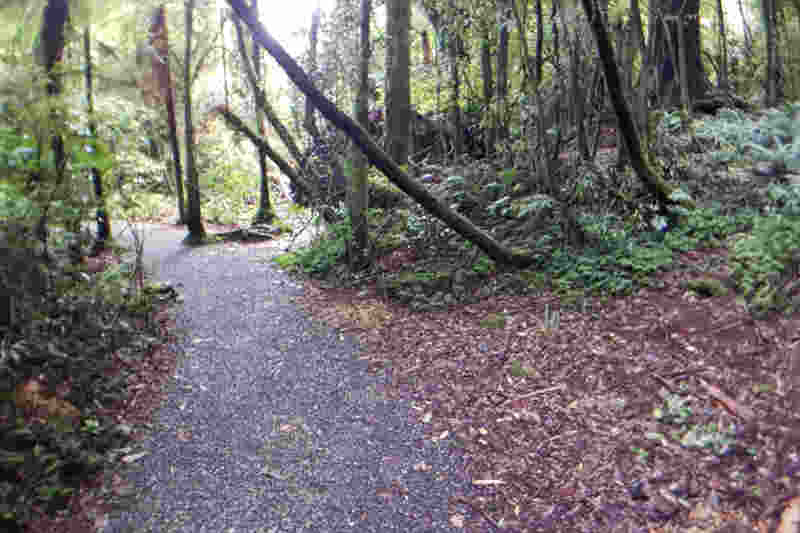One of the questions that often comes up when you’re a hypnotist is that people want to know if you can hypnotize yourself.
Yes! You can hypnotize yourself, and it’s not even difficult. All that’s required is a little understanding of how the mind works, and a simple process that anyone can follow. In this article, we’ll cover both.
But first, why would you want to hypnotize yourself?
Why hypnotize yourself
For a lot of people, their only knowledge of hypnosis is from pop culture and maybe a stage show or two. And when that’s all the information we have, it’s natural to ask why you should learn to hypnotize yourself.
As it turns out, the tricks you see in a stage show are probably less than 1% of what’s possible with hypnosis.
With hypnosis, the underlying process is that we’re moving ourselves out of our own way, so that our mind can reorganize itself a little.
This process is easy for anyone to learn, and the benefits can be life-changing.
Here’s just some of the things self-hypnosis has been used for:
- Overcoming fears and phobias.
- Creating and exploring hypnotic realities that are as real as real life.
- Modeling hypnosis for our hypnosis subjects. This one is essential if you would like to become a skilled hypnotist.
- Learning just about any skill at an accelerated rate.
- Pain control.
- Quitting smoking.
- Weight loss or gain.
- Motivation.
- Setting and reaching goals.
- A gateway into meditation.
- A gateway into lucid dreams.
- And much, much more.
Naturally, some of these are more difficult than others to achieve. For example, quit smoking, pain control and weight loss are things that can easily be achieved by most people when the right approach is taken. Some of the others on the list may take a little more work.
In short, self-hypnosis can be used to help us to achieve just about anything our friendly, local hypnotherapist can help us with.
It sounds good, right?
All that stuff from one simple process.
You might be thinking we’d need a lot to get started. As it turns out, all that’s needed is you, and a tiny bit of effort.
What’s needed for self-hypnosis
So what do you need in order to hypnotize yourself?
For such a powerful process, the list of requirements is surprisingly short. When I first learnt self-hypnosis, I was astonished by how quickly I was able to make progress.
In the space of a few short hours I went from being skeptical it was real, to being able to run visual hallucinations inside my head with my eyes closed.
My mind was blown.
And that was just the beginning.
Here’s what you need to get started today:
- A quiet place where no-one will disturb you (turn off notifications, put out any pets, and ask people not to bother you for a bit).
- Somewhere safe you can sit or lie down where you won’t come to harm if you fall asleep.
- A simple process that you can follow.
- Enough determination to see the process through until you get results.
That last one is important. The very first time I tried self-hypnosis, it didn’t work. So I tried again. And again. I forget the exact number, but I think it was something like 4 or 5 tries before I got there.
That’s not a lot of effort to start to learn a process that’s as life-changing as self-hypnosis.
But the fact remains: As with every other skill you’ve ever learnt, you’ll probably get it wrong the first few times. This is how we humans go about learning, and it is expected.
All you have to do to achieve success is follow the process and make tiny corrections as you notice things each time.
How to hypnotize yourself
So how exactly do you hypnotize yourself?
When you’re starting out, the very first thing is to create a suitable environment.
How easy this is for you will depend on your personal circumstances. If you’re reading this, there’s a good chance that you have a bed or somewhere comfy you can lie down.
That makes the ideal place to start.
As I mentioned before, make sure it’s somewhere quiet and where you won’t come to harm if you fall asleep.
Once you get good at self-hypnosis, you’ll find that you can do it anywhere. And when you’re starting out, it’s easier to focus when there are no distractions.
Once you’ve established your environment, you can use it whenever you like, so take a few moments to decide what that will look like and how you’ll set it up.
A simple self-hypnosis induction
Then follow this process:
- Make sure you won’t be disturbed. Ideally for a couple of hours.
- Lie or sit somewhere comfortable and safe where you won’t come to harm if you fall asleep.
- Hold your neck level so that your head is straight up and down compared to your body.
- Tilt your eyes all the way up until they start to strain.
- Move your eyes back to that point where they are just starting to strain.
- Focus on something that you’re looking directly at. If there’s nothing there, reorient yourself until there is, and restart the process from step 2.
- As you’re focusing on that object, count down slowly from 100 to 0.
- When you feel your eyes becoming heavy, close them and sink down into self-hypnosis.
- Luxuriate in the sensations for a few moments.
- When you’re ready to come out, open your eyes.
- If you need to, gently shake your head to clear the hypnosis.
That’s really all there is to it. Practice running through this exercise a few times until you can do the entire thing without really thinking about it, and you’ll quickly find that you can hypnotize yourself with ease.
If there are any things you’d like to experience or achieve with self-hypnosis, those all happen at step 9.
And if you’d like to be able to turn self-hypnosis on and off with a switch, you might like to check out my other article on how to hypnotize yourself.
How to meditate with self-hypnosis
One of the many things that self-hypnosis can be used for is as a gateway to meditation.
And since this is one of the easiest things to do with it, here’s a simple process you can follow once you’re in hypnosis at step 9 above.
When you’re in self-hypnosis, do this:
- Bring your hands together so that the palm of one is on top of the other. You’re probably already in this position anyway since most people naturally assume that pose when learning things like this. If you have trouble moving, simply position your hands like that before you start the hypnosis.
- Gently push down with your top hand while you push up with the same amount of force from the bottom one.
- Feel the pressure at the contact points.
- Notice how that tension changes as you move your attention up one of your arms, then the other.
- Be curious about what all of that’s like for a few moments.
When you do this process, you’re training your mind to focus. Even a few seconds can greatly enhance your ability to meditate.
And of course, if you already meditate, you can do whatever you usually do in place of this process.
Other things to try with self-hypnosis
There’s way more that can be tried in self-hypnosis.
Did you know that self-hypnosis can be used as a platform to make you more creative? In How to Explode Your Creativity I cover how creativity works. I use the processes in this article while in self-hypnosis to enhance my own creativity.
If you find yourself having trouble sleeping, the stuff in How to Fall Asleep Even if You Can’t Stop Thinking works even better when you carry out the in-bed parts of the process when you’re in self-hypnosis.
And if you’d like to use self-hypnosis to move directly from being awake into a lucid dream, you might enjoy my article How to Hypnotize Someone Into a Lucid Dream.
How to take self-hypnosis to the next level
In this article, I’ve given the simplest process I know for hypnotizing yourself.
However, it is far from the fastest. It’s just easy to remember, and it fits in with most people’s cultural understanding of hypnosis. This makes it easier to believe, which in turn makes it easier for most people to implement.
Self-hypnosis can be taken well beyond this.
Did you know that it’s possible to use self-hypnosis to create complete hypnotic realities that seem as real as real life, and then use them for any purpose you might see fit?
Not only that, but time doesn’t work the same way in these realities as it does in the waking world, which means that it’s possible to spend significant amounts of time there in the space of a few hours of clock time in the waking world. Or even a few minutes.
Imagine being able to create the place of your dreams, and then go there for vacations any time you choose.
Maybe there are some skills you’d like to learn. Once you have a time-distorted hypnotic reality running inside your own mind, and you can easily get back there any time you choose, it’s possible to create places within that reality that you can use for anything.
Regardless of what kind of skill you’d like to hone, it can probably be done inside a hypnotic reality. If you’d like to get better at playing the piano, simply create a music room containing your favorite piano, and practice for as long as you’d like in your time-distorted reality.
So long as the basic information is already inside your mind, it’s possible to hone just about any skill.
Fast.
The Self-Hypnosis Formula
As you might imagine, there’s a little more involved in all of that than I can fit in a simple blog post like this one. So I’ve written a book The Self-Hypnosis Formula which is designed to take people from not even knowing what self-hypnosis is, to doing it on demand.
If you’d like to get started with self-hypnosis fast, you can check it out today.





